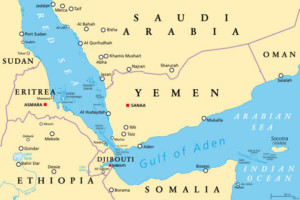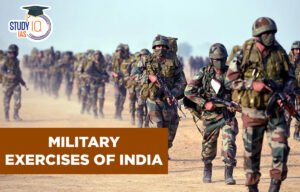Table of Contents
Padmaja Naidu Himalayan Zoological Park
Context: The Padmaja Naidu Himalayan Zoological Park in Darjeeling has successfully bred 77 snow leopards since the 1980s.
About Padmaja Naidu Himalayan Zoological Park (Darjeeling Zoo)
- The Padmaja Naidu Himalayan Zoological Park was established in 1958 and is located in Darjeeling, West Bengal.
- It holds the distinction of being the highest-altitude zoo in India & the only conservative breeding programme for snow leopards (started in 1986) in India.
- The zoo focuses on breeding animals that are native to alpine environments and has achieved success in breeding programs for the Snow Leopard, the rare Himalayan Wolf, and the Red Panda.
- Recently, The Padmaja Naidu Himalayan Zoological Park has been internationally acknowledged by the World Association for Zoos and Aquariums (WAZA) for its effective conservation breeding program (CBC) for snow leopards.
We’re now on WhatsApp. Click to Join
Davos Summit, 2024
Context: The World Economic Forum (WEF) is holding its Annual Meeting from January 15 to 19 in Davos, Switzerland.
About World Economic Forum (WEF)
- Nature: An international non-governmental organisation fostering public-private cooperation.
- Founding: Established in January 1971 by Klaus Schwab, a German engineer and economist.
- Role: It brings together top political, business, and cultural leaders to shape global, regional, and industry agendas.
- Decision-Making: The Forum does not possess independent decision-making authority.
- Headquarters: Located in Cologny-Geneva, Switzerland.
- Reports: The World Economic Forum publishes several annual reports, including:
- Global Competitiveness Report
- Global Information Technology Report
- Global Gender Gap Report
- Global Risks Report
- Global Travel and Tourism Report
- Financial Development Report
- Global Enabling Trade Report
Davos Meeting
- The World Economic Forum organises an annual meeting at the end of January in Davos, a Swiss mountain resort in the Graubünden region.
- Known as the Davos Agenda, this meeting aims to guide global leaders on key priorities for the upcoming year.
- 2024 Theme: Rebuilding trust
- Edition: 54th
India’s Multidimensional poverty rate down to 11.28%
Context: According to a discussion paper by NITI Aayog the percentage of India’s population living in multidimensional poverty dropped to 11.28% in 2022-23 from 29.17% in 2013-14. The discussion paper utilises data from National Family Health Surveys (NFHS) conducted in 2005-06, 2015-16, and 2019-21 to understand long-term poverty trends.
About National Multidimensional Poverty Index
- Definition: The National MPI is a tool for measuring poverty, taking into account various factors beyond just income or consumption expenditure.
- Indicators: This index is based on three key dimensions – health, education, and standard of living, each weighted equally and represented by 12 indicators.
- The National MPI includes 12 indicators, compared to the global MPI’s 10 indicators.
- Methodology: To calculate changes in poverty rates, the National MPI, developed by Niti Aayog, employs the Alkire Foster method.
Key Findings Of The Discussion Paper
- India experienced a notable decrease in multidimensional poverty, dropping from 29.17% in 2013-14 to 11.28% in 2022-23, a reduction of 17.89 percentage points. This means approximately 24.82 crore individuals have moved out of multidimensional poverty over the past nine years.
- Uttar Pradesh leads in poverty reduction, with about 5.94 crore people overcoming poverty, followed by Bihar and Madhya Pradesh.
- The poverty headcount ratio’s decline was quicker between 2015-16 and 2019-21, at an annual rate of 10.66%, compared to the 7.69% annual rate from 2005-06 to 2015-16.
- There has been significant progress in all 12 indicators of the Multidimensional Poverty Index (MPI) throughout the study period.
- India is on track to reach single-digit poverty rates by 2024.
- The country is also on course to meet the Sustainable Development Goals (SDGs) 1.2, which involves halving multidimensional poverty, well before the 2030 target.
Khanij Bidesh India Ltd
Context: India commits Rs 200 crore to explore and develop five lithium mines in Argentina, advancing the energy transition with a focus on securing critical minerals. The partnership is between Khanij Bidesh India Ltd (KABIL), a joint venture of three state-owned companies in India, and Argentina’s state-owned mining company, Catamarca Minera Y Energética Sociedad Del Estado (CAMYEN).
About Khanij Bidesh India Ltd (KABIL)
- Formation: KABIL, formed in 2019, is a joint venture involving NALCO, HCL, and MECL.
- Objective: The company’s purpose is to source strategic minerals like lithium and cobalt from international markets.
- Ministry: It operates under the guidance of the Ministry of Mines.
- Equity Structure: NALCO holds 40%, HCL 30%, and MECL 30% in equity participation.
- KABIL’s Goals:
- Mineral Security: KABIL aims to ensure India’s mineral security and self-reliance in critical minerals.
- Self-Reliance: It seeks to decrease dependency on imports by acquiring strategic minerals.
- KABIL’s Functions:
- Mineral Operations: It’s responsible for the identification, acquisition, exploration, development, mining, and processing of strategic minerals abroad.
- Trade and Collaborations: It looks to create trading opportunities and governmental collaborations, and make strategic investments in foreign mining assets.
- International Partnerships: KABIL aims to forge partnerships with mineral-rich countries, leveraging Indian expertise in exploration and mineral processing for mutual economic benefit.
Commission for Air Quality Management
Context: Delhi faces ongoing poor air quality issues which worsen in winter and around Diwali due to stubble burning.
About Commission for Air Quality Management
- Nature: Statutory Body
- Composition:
- Chairperson: Government official of Secretary or Chief Secretary rank, appointed for 3 years or until 70 years old.
- 5 Ex Officio Members: Chief Secretaries or Secretaries for Environment Protection in Delhi, Punjab, Haryana, Rajasthan, and Uttar Pradesh.
- 3 Full-Time Technical Members: Experts in air pollution.
- 3 NGO Members: Representing non-governmental organizations.
- Technical Members: From CPCB, Indian Space Research Organisation, and NITI Aayog.
- Powers and Functions:
- Restricting activities impacting air quality.
- Investigating and researching environmental pollution affecting air quality.
- Developing codes and guidelines for air pollution prevention and control.
- Issuing binding directions on inspections, regulations, and other matters impacting air quality.
- The CAQM is tasked with responding to pollution spikes through the Graded Action Response Plan.
Gulf of Aden
Context: Houthi rebels strike a US-owned ship off the coast of Yemen in the Gulf of Aden.

About Gulf Of Aden
- The Gulf of Aden is an extension of the Indian Ocean, located between Yemen on the Arabian Peninsula’s south coast and Somalia in Africa.
- It is bordered by Somalia and the Socotra Islands to the south, Yemen to the north, the Arabian Sea to the east, and Djibouti to the west.
- This gulf spans approximately 900 kilometres in length and 500 kilometres in width.
- It serves as a crucial waterway for the transportation of oil from the Persian Gulf.
- The Gulf of Aden connects the Red Sea with the Arabian Sea via the Strait of Bab el Mandeb, playing a key role in oil transport from Europe to the Far East.
- The area is known for its abundant and diverse marine life.
- While its coastline has limited large-scale fishing infrastructure, it sustains numerous fishing towns and major ports such as Aden and Djibouti.


 List of Military Exercises of India 2024...
List of Military Exercises of India 2024...
 India to Host First Global Conference on...
India to Host First Global Conference on...
 How Terror Networks Abuse Digital Tools
How Terror Networks Abuse Digital Tools





















